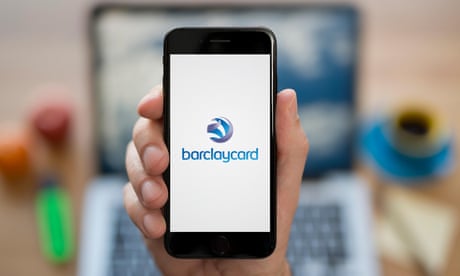
Some Barclaycard customers who only make the minimum repayment each month will take an extra decade to clear their debt and pay hundreds of pounds in extra interest after the credit card provider changed its terms.
Barclaycard – thought to be the UK’s biggest credit card provider – has written to customers telling them it is cutting their minimum payments to give them “more flexibility”.
However, some customers and commentators have criticised the provider for not spelling out that this could significantly increase both the interest a borrower pays and how long it would take them to pay off what they owe.
Each month credit card customers with a balance on their card can either pay off everything they owe, a set sum or the minimum payment required by the provider. Unless they opt to clear their balance, they pay interest on the outstanding amount.
The changes being made by the credit card arm of Barclays, which take effect on 22 July, will apply to all Barclaycard holders. At the same time some customers will see their interest rate go up.
Barclaycard is changing from a “tiered” structure – whereby many people pay off anywhere between 2.25% and 4.25% of their overall balance – to one that takes into account interest and fees.
Customers will pay the highest of either 1% of their balance; 1% of the balance plus any interest, default fees or account fees; or the total outstanding balance if it is less than £5.
Cardholders have been receiving emails from the company with “Your minimum payment is going down” in the subject line.
Those emails go on to say that “we’re making these changes to give you greater flexibility over how much you pay each month”, and give an example of how the change could affect people.
Existing minimum payments vary depending on the customer’s APR and when the card was taken out, but one cardholder was told that on a £2,500 balance, their minimum monthly payment would be cut from £116 to £79, while another was told theirs would go down from £80 to £67.
But the emails do not spell out how much extra interest the customers will have to pay under the new minimums, or how much longer it will take to fully clear the debt.
At the moment, someone with £1,000 of debt on a fairly typical Barclaycard who only pays the minimum amount each month would end up paying a total of £699 interest. But under the new rules, this figure jumps to £1,655.
It would take this person nine years and eight months to fully clear the debt under the current regime – but the new lower payments will increase that to 19 years and three months.
This example is based on someone paying an APR of 24.9% – the typical new rate for a Barclaycard Platinum – who does not spend any more on the card and where the minimum monthly payment is 3.75% of their balance.
One “appalled” cardholder who contacted the Guardian after receiving the email said he would argue that reducing a minimum payment was “not designed to ‘give you greater flexibility’. It will just make people already struggling even worse off.” He claimed the company was using the cost of living crisis to push up its profits, “then marketing it as though they’re doing their customers a favour”.
The MoneySavingExpert website said the changes meant some cardholders “could be in debt years longer paying double the interest”. Martin Lewis, the site’s founder, said: “This is a worryingly under-the-radar change … this seemingly technical and bland change is a huge danger signal.”
Barclaycard said it had been very clear about the implications of paying the minimum and had been encouraging customers to see what they could save by switching to a fixed monthly payment.
A Barclays spokesperson said: “We have made these changes to increase flexibility for our customers, and have been clear in our communications that paying more than the minimum can help customers clear their balance sooner and pay less interest.”
Customers can choose to continue to pay more than the minimum each month should they wish to do so, and the new system would be more targeted and flexible, said the company.
The change brings Barclaycard into line with some of its rivals, such as NatWest and Santander, at which the typical minimum payment formula is 1% of the balance and any interest or fees.